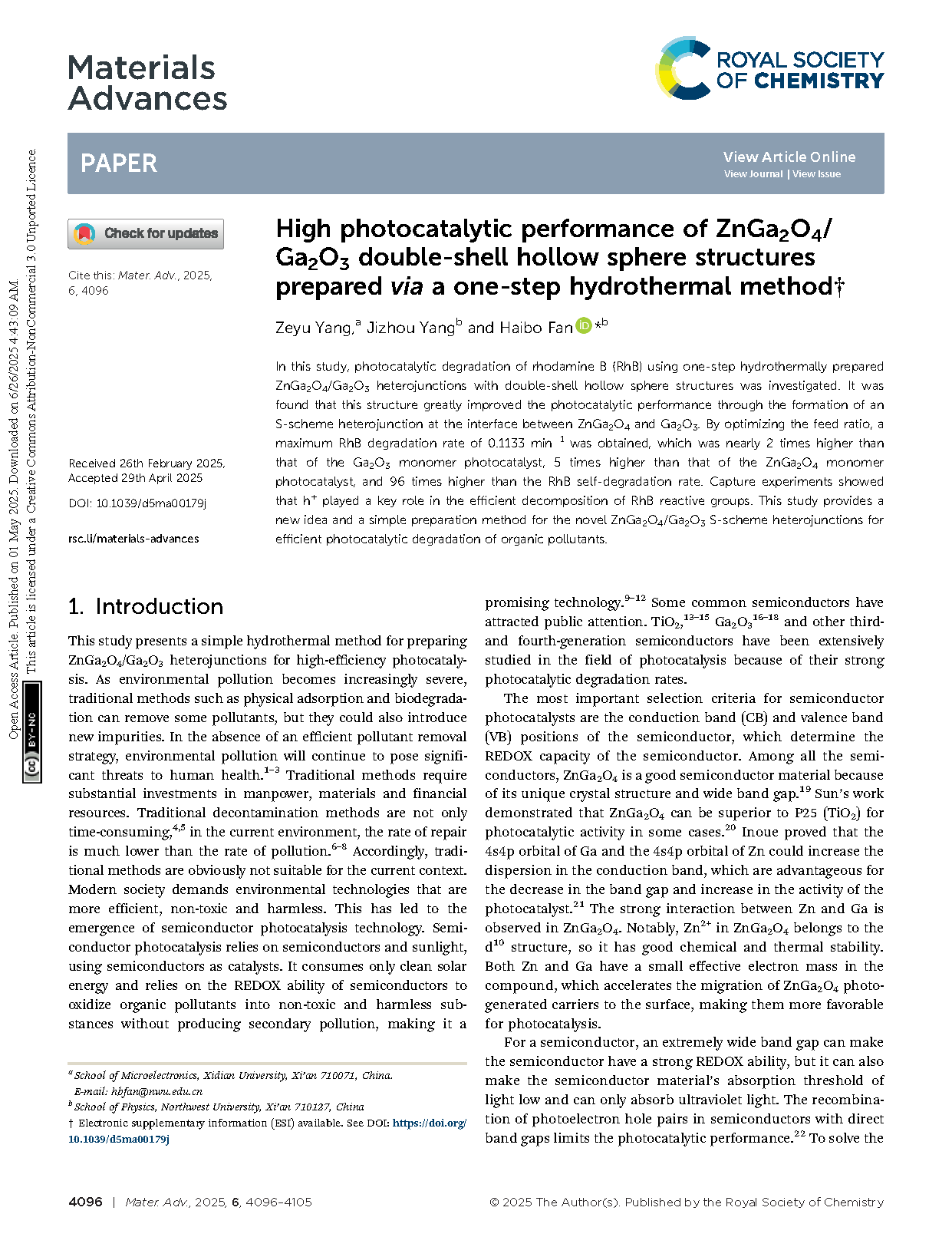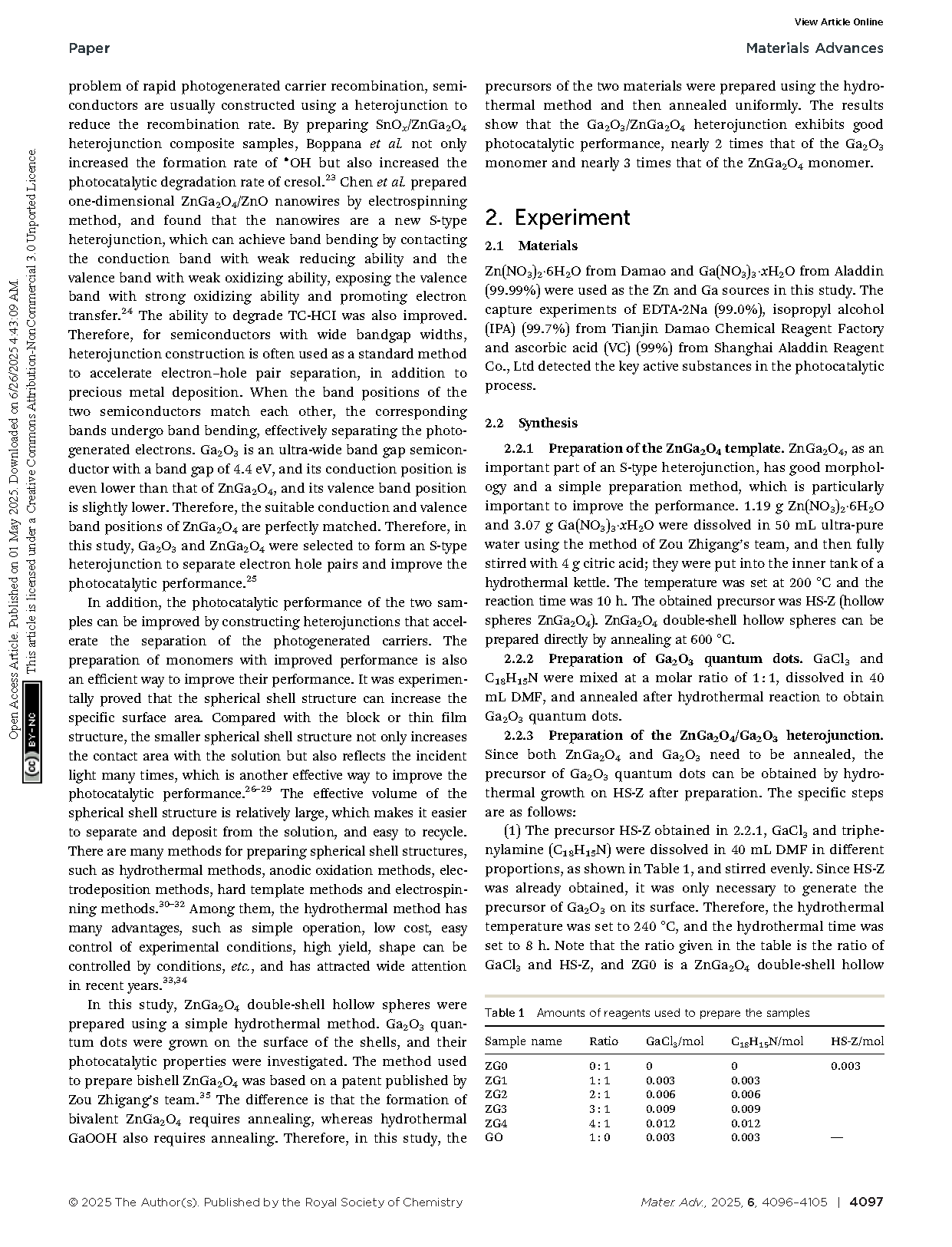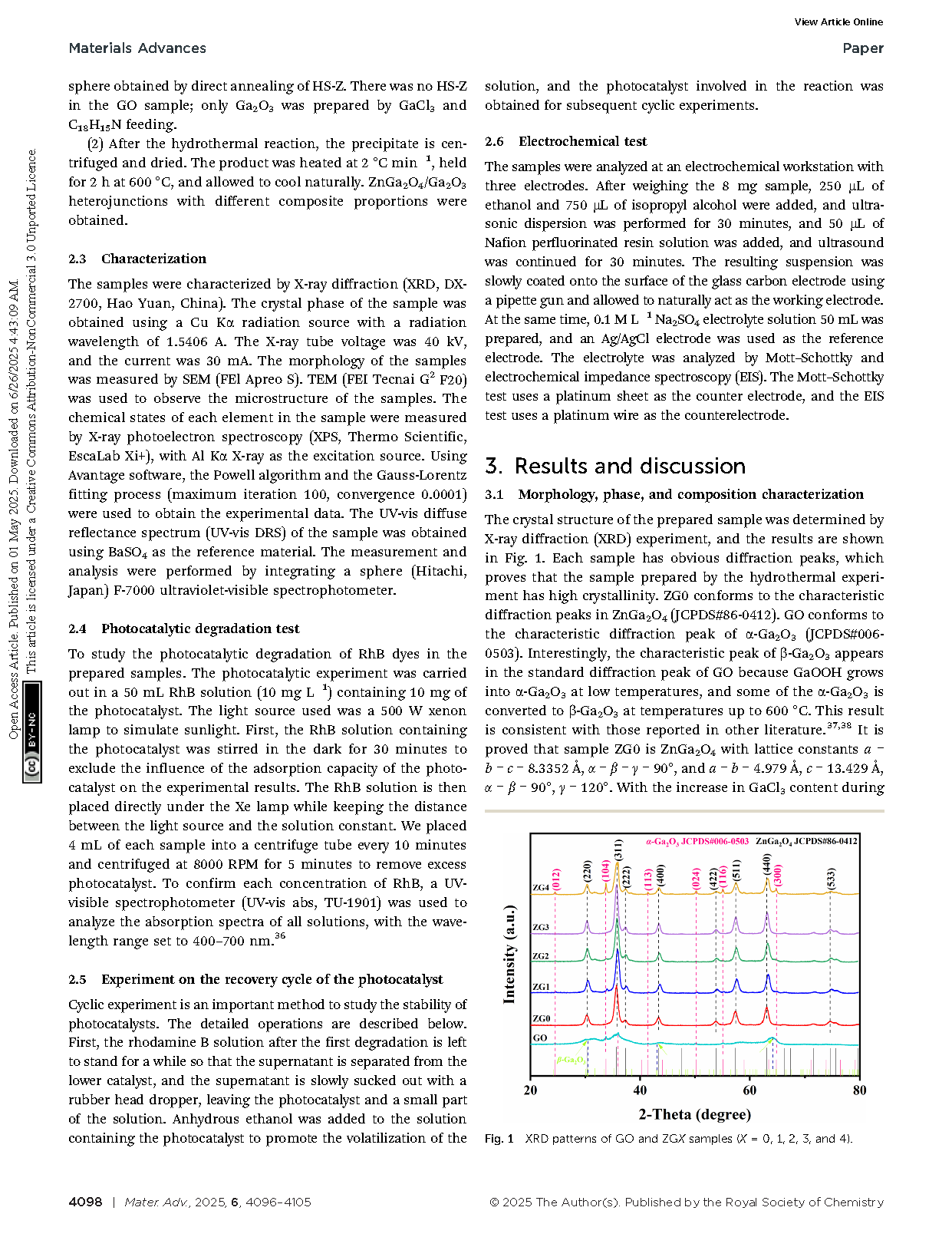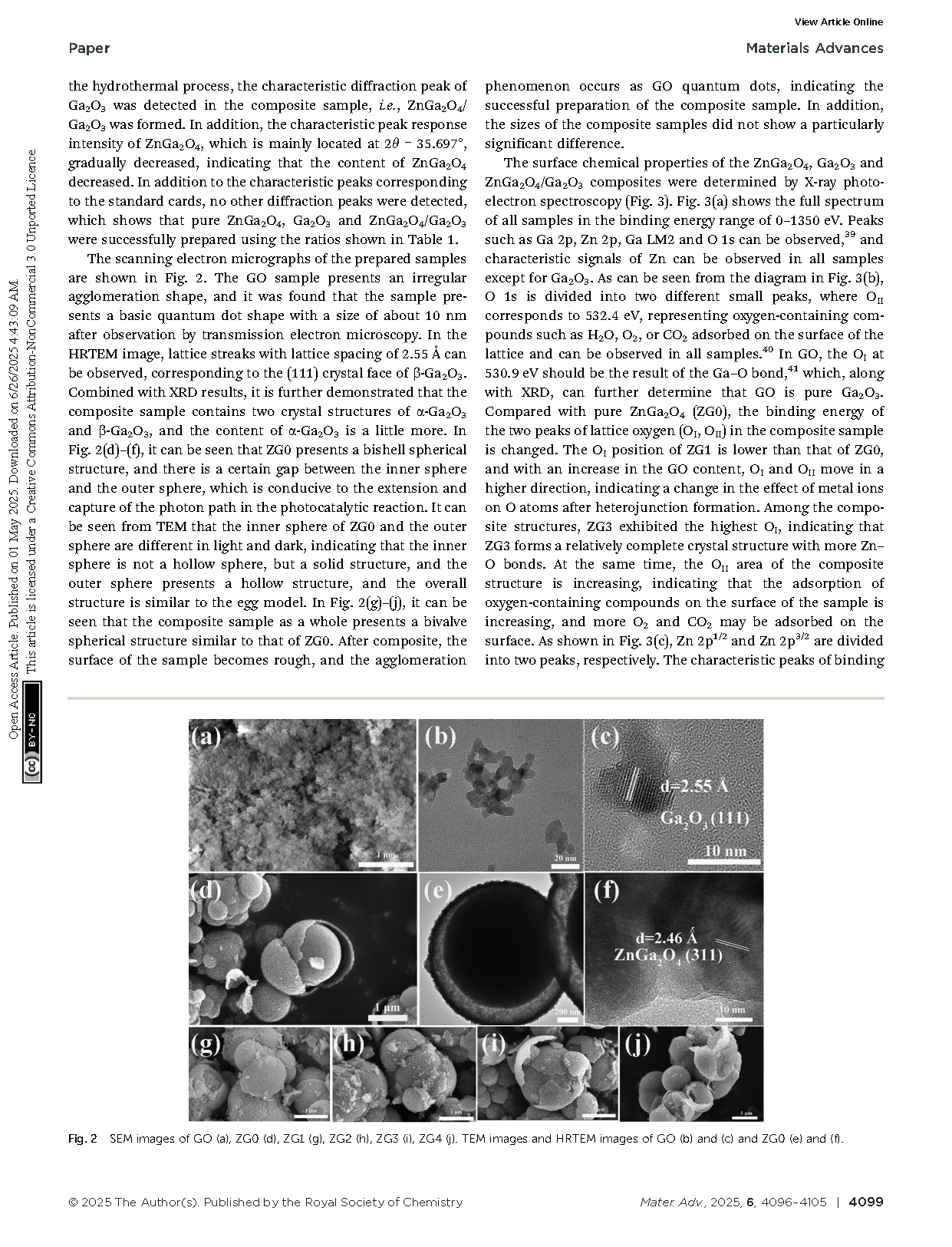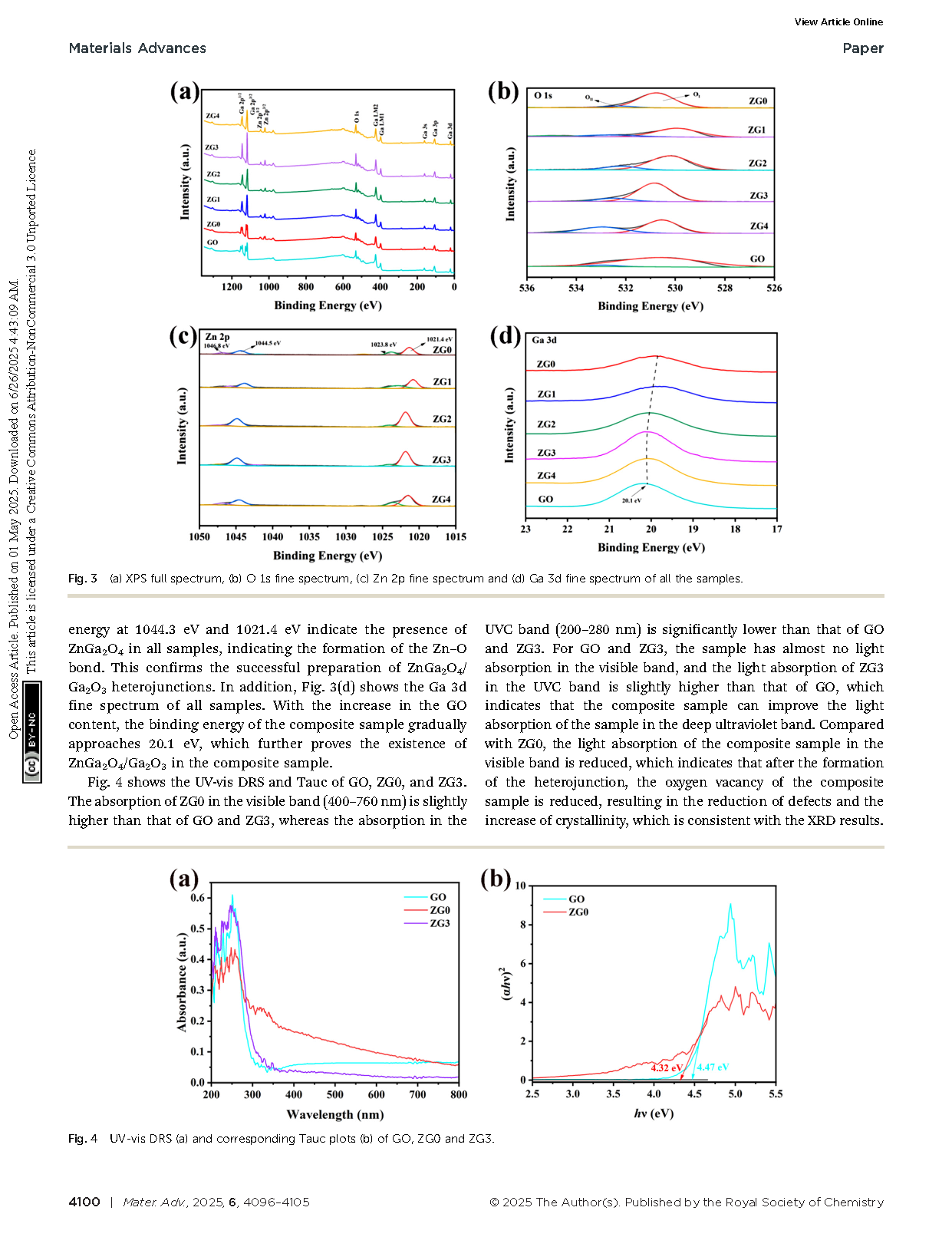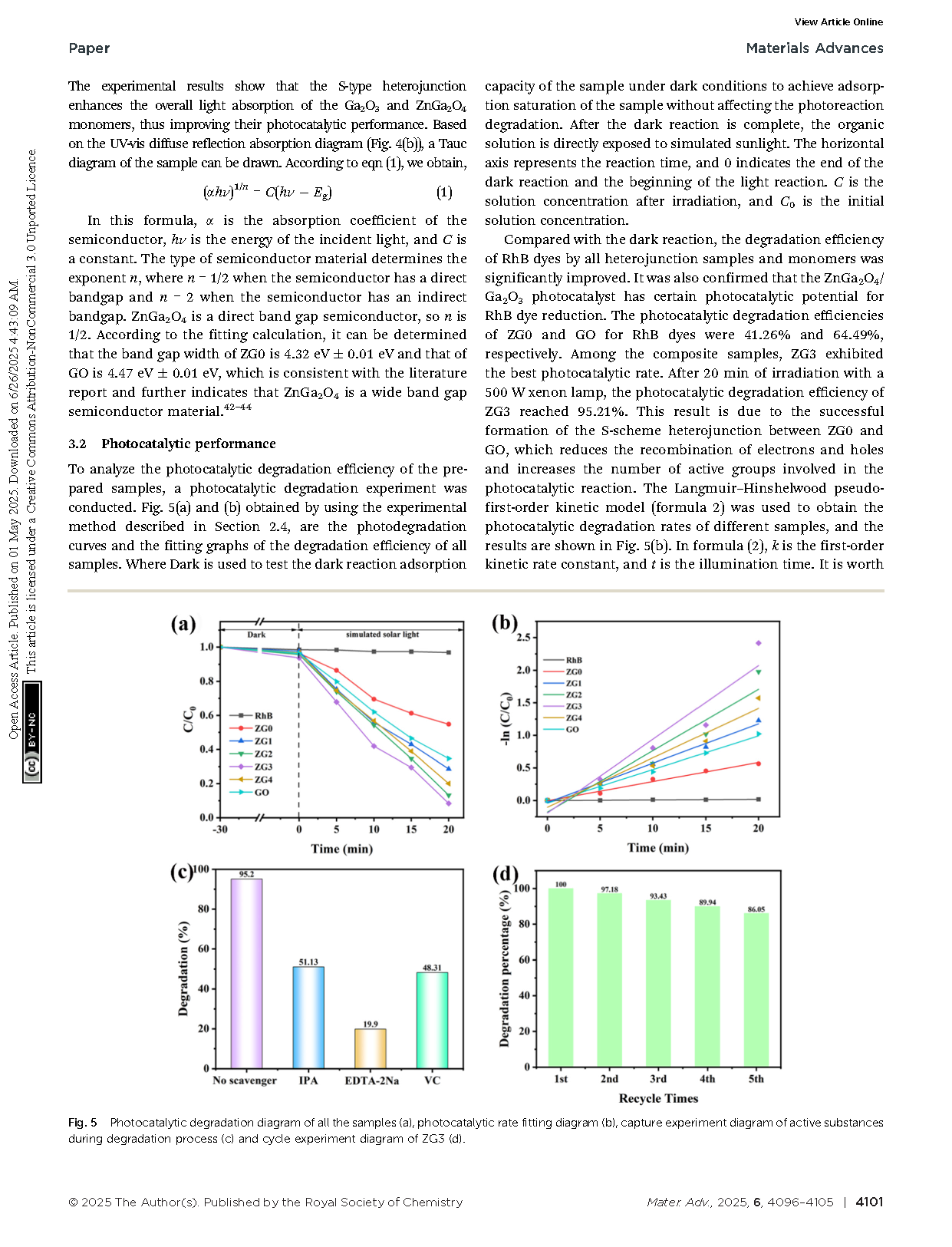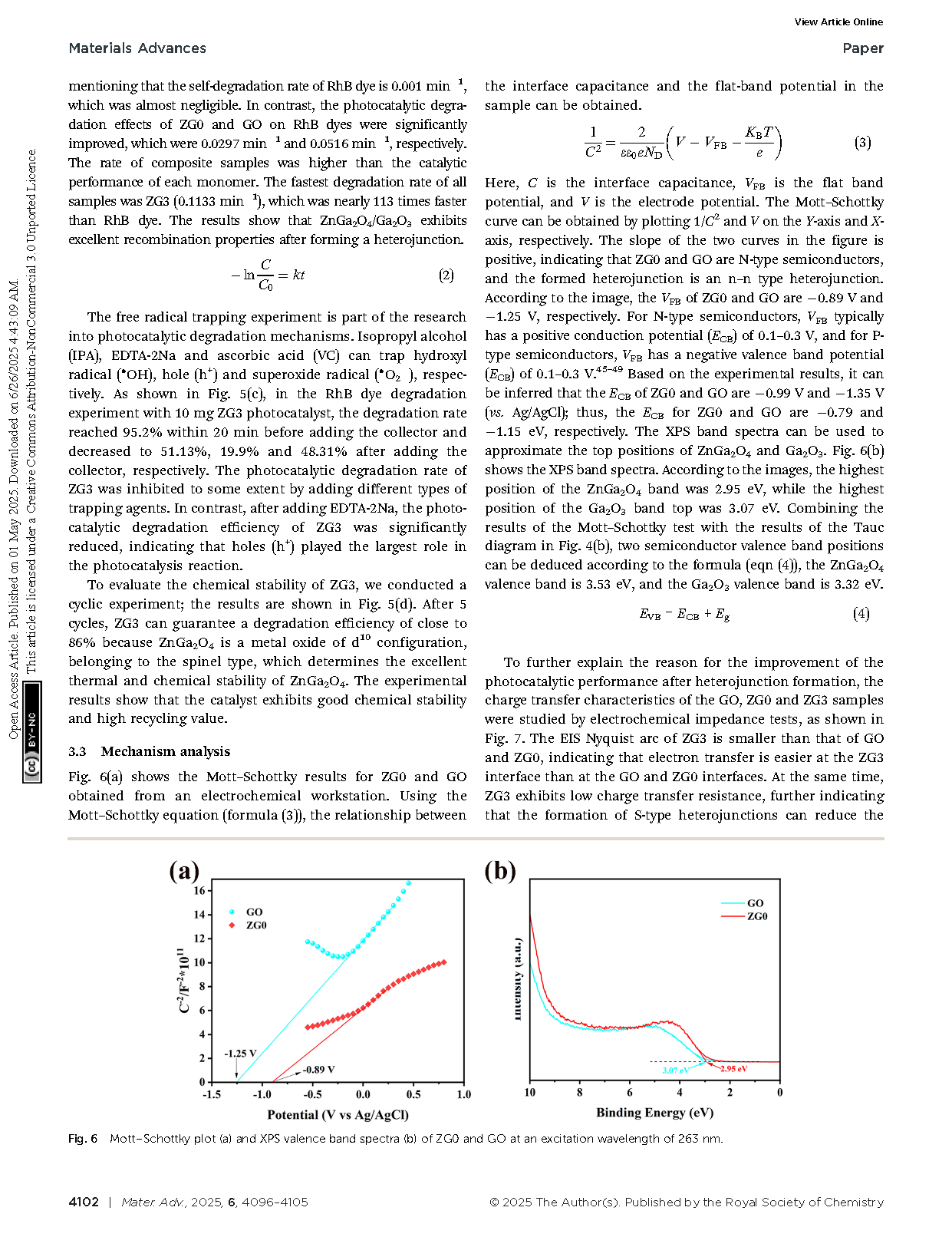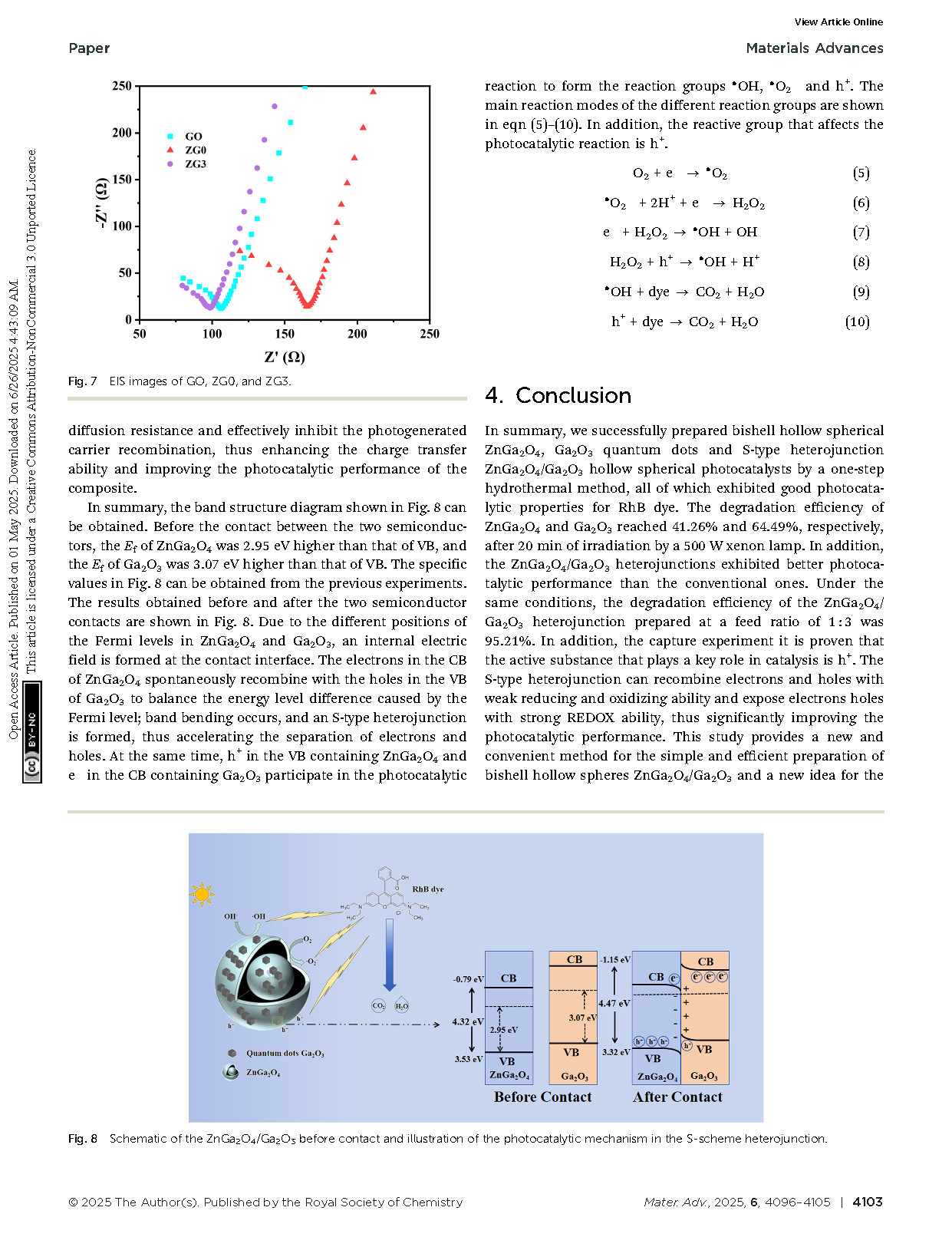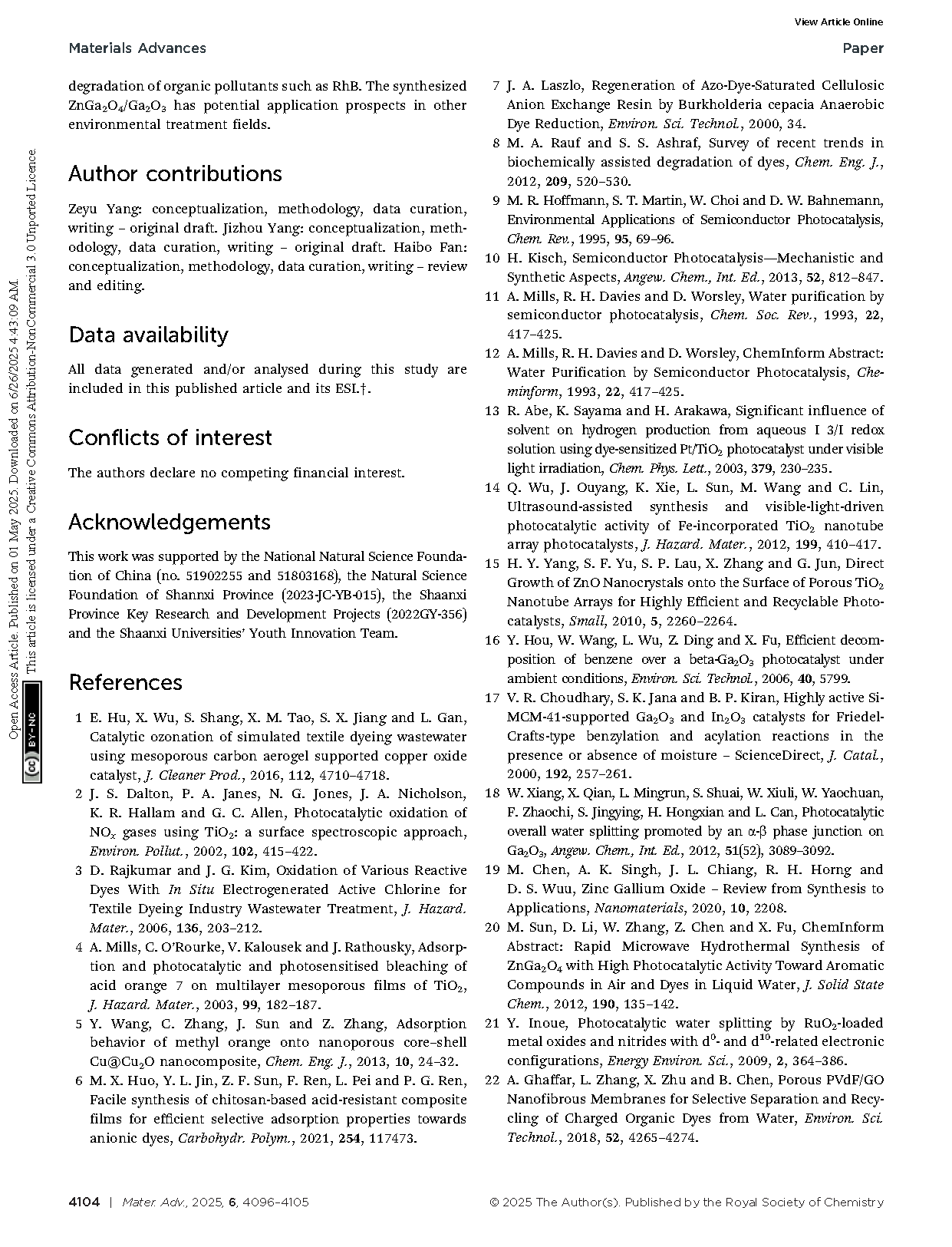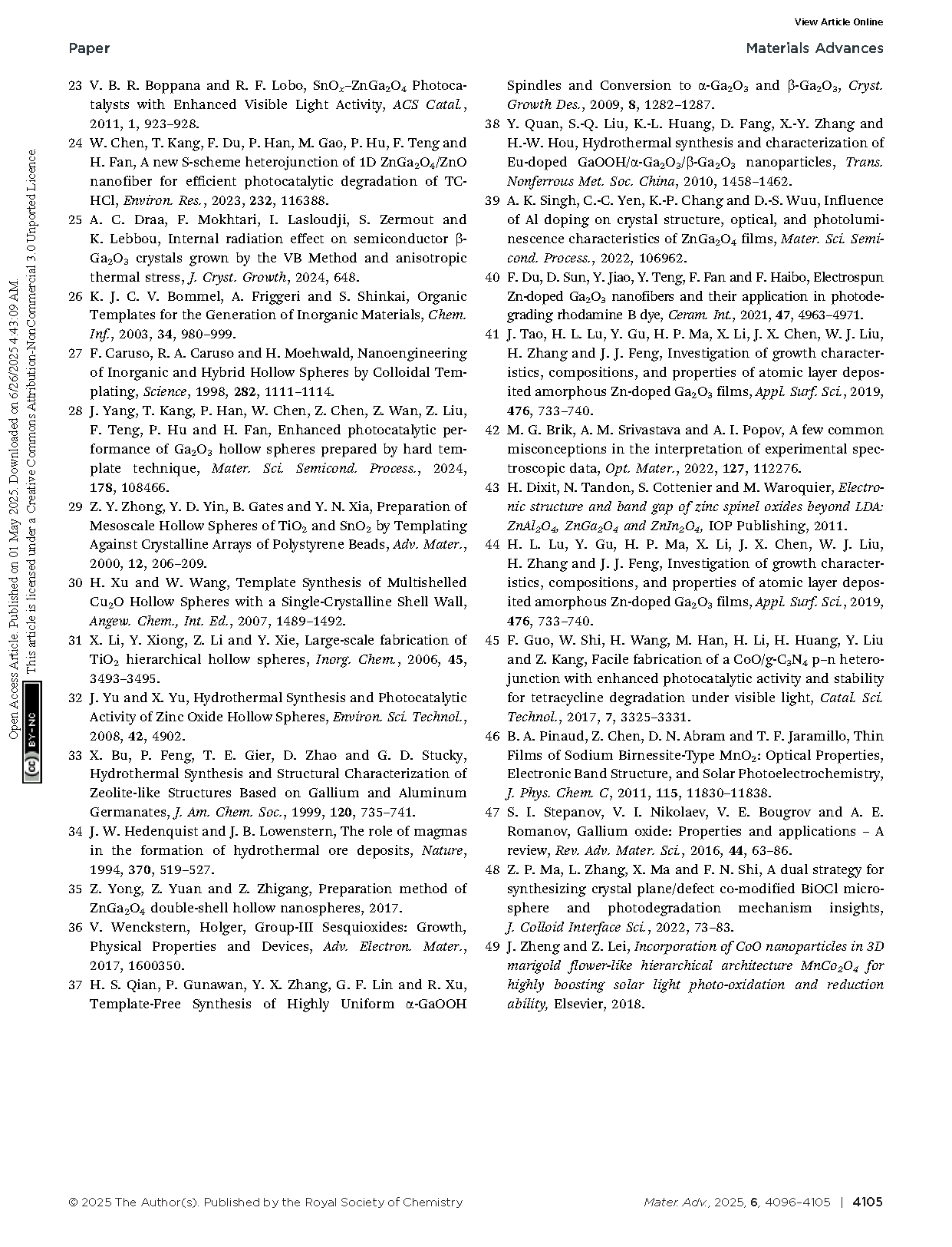
【Member Papers】High photocatalytic performance of ZnGa₂O₄/Ga₂O₃ double-shell hollow sphere structures prepared via a one-step hydrothermal method
日期:2025-07-04阅读:235
Researchers from the Xidian University have published a dissertation titled "High photocatalytic performance of ZnGa2O4/Ga2O3 double-shell hollow sphere structures prepared via a one-step hydrothermal method" in Materials Advances.
Project Support
This work was supported by the National Natural Science Foundation of China (no. 51902255 and 51803168), the Natural Science Foundation of Shannxi Province (2023-JC-YB-015), the Shaanxi Province Key Research and Development Projects (2022GY-356) and the Shaanxi Universities’ Youth Innovation Team.
Background
This study presents a simple hydrothermal method for preparing ZnGa2O4/Ga2O3 heterojunctions for high-efficiency photocatalysis. As environmental pollution becomes increasingly severe, traditional methods such as physical adsorption and biodegradation can remove some pollutants, but they could also introduce new impurities. In the absence of an efficient pollutant removal strategy, environmental pollution will continue to pose significant threats to human health. Traditional methods require substantial investments in manpower, materials and financial resources. Traditional decontamination methods are not only time-consuming, in the current environment, the rate of repair is much lower than the rate of pollution. Accordingly, traditional methods are obviously not suitable for the current context. Modern society demands environmental technologies that are more efficient, non-toxic and harmless. This has led to the emergence of semiconductor photocatalysis technology. Semiconductor photocatalysis relies on semiconductors and sunlight, using semiconductors as catalysts. It consumes only clean solar energy and relies on the REDOX ability of semiconductors to oxidize organic pollutants into non-toxic and harmless substances without producing secondary pollution, making it a promising technology. Some common semiconductors have attracted public attention. TiO2, Ga2O3 and other third- and fourth-generation semiconductors have been extensively studied in the field of photocatalysis because of their strong photocatalytic degradation rates.
Abstract
In this study, photocatalytic degradation of rhodamine B (RhB) using one-step hydrothermally prepared ZnGa2O4/Ga2O3 heterojunctions with double-shell hollow sphere structures was investigated. It was found that this structure greatly improved the photocatalytic performance through the formation of an S-scheme heterojunction at the interface between ZnGa2O4 and Ga2O3. By optimizing the feed ratio, a maximum RhB degradation rate of 0.1133 min−1 was obtained, which was nearly 2 times higher than that of the Ga2O3 monomer photocatalyst, 5 times higher than that of the ZnGa2O4 monomer photocatalyst, and 96 times higher than the RhB self-degradation rate. Capture experiments showed that h+ played a key role in the efficient decomposition of RhB reactive groups. This study provides a new idea and a simple preparation method for the novel ZnGa2O4/Ga2O3 S-scheme heterojunctions for efficient photocatalytic degradation of organic pollutants.
Conclusion
In summary, we successfully prepared bishell hollow spherical ZnGa2O4, Ga2O3 quantum dots and S-type heterojunction ZnGa2O4/Ga2O3 hollow spherical photocatalysts by a one-step hydrothermal method, all of which exhibited good photocatalytic properties for RhB dye. The degradation efficiency of ZnGa2O4 and Ga2O3 reached 41.26% and 64.49%, respectively, after 20 min of irradiation by a 500 W xenon lamp. In addition, the ZnGa2O4/Ga2O3 heterojunctions exhibited better photocatalytic performance than the conventional ones. Under the same conditions, the degradation efficiency of the ZnGa2O4/Ga2O3 heterojunction prepared at a feed ratio of 1 : 3 was 95.21%. In addition, the capture experiment it is proven that the active substance that plays a key role in catalysis is h+. The S-type heterojunction can recombine electrons and holes with weak reducing and oxidizing ability and expose electrons holes with strong REDOX ability, thus significantly improving the photocatalytic performance. This study provides a new and convenient method for the simple and efficient preparation of bishell hollow spheres ZnGa2O4/Ga2O3 and a new idea for the degradation of organic pollutants such as RhB. The synthesized ZnGa2O4/Ga2O3 has potential application prospects in other environmental treatment fields.
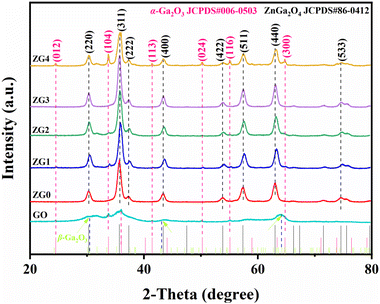
Fig. 1 XRD patterns of GO and ZGX samples (X = 0, 1, 2, 3, and 4).
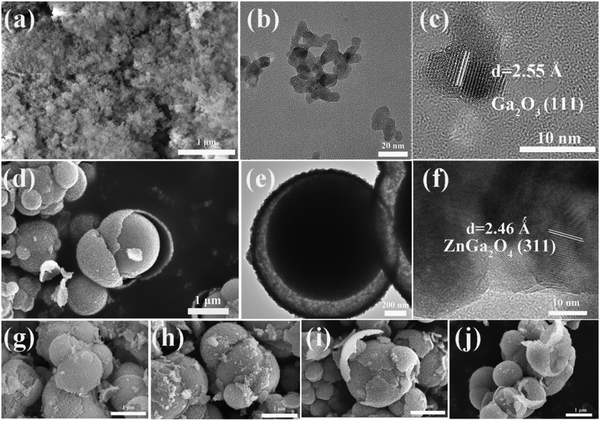
Fig. 2 SEM images of GO (a), ZG0 (d), ZG1 (g), ZG2 (h), ZG3 (i), ZG4 (j). TEM images and HRTEM images of GO (b) and (c) and ZG0 (e) and (f).
DOI:
doi.org/10.1039/D5MA00179J
